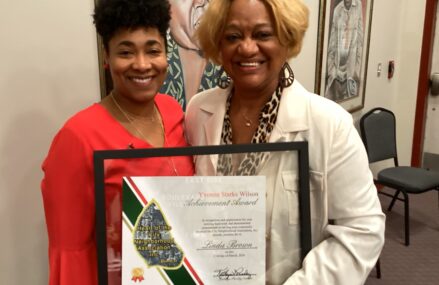
By KARIN LAUB
In this photo taken Monday, Sept. 9, 2013, a Palestinian man walks by a barrier separating the West Bank town of Abu Dis, from east Jerusalem with Arabic graffiti that reads, “PLO, no for negotiations,” seen on the side of Abu Dis, West Bank. Twenty years after the two sides signed the Declaration of Principles on the White House lawn, the words that launched Israeli-Palestinian talks on dividing the Holy Land into two states ring hollow to many on both sides. Negotiators said mistakes they made then cause damage to this day. PLO refers to the Palestine Liberation Organization. (AP Photo/Nasser Nasser)
ABU DIS, West Bank (AP) — In 1993, the words rang hopeful and historic. Israel and the PLO agreed “it is time to put an end to decades of confrontation and conflict,” live in peaceful co-existence and reach a “just, lasting and comprehensive peace settlement.”
Twenty years later, the words that launched Israeli-Palestinian talks on dividing the Holy Land into two states ring hollow to many on both sides. Negotiators say mistakes they made then are causing damage to this day.
Palestinians seem no closer now than they were 20 years ago to a state in the West Bank, Gaza Strip and east Jerusalem, and some argue they are worse off. The number of Israeli settlers has doubled. East Jerusalem is cut off by an Israeli barrier. Gaza, ruled by the Islamic militant Hamas since 2007, is turning into a distinct enclave.
Many Israelis, scarred by Palestinian suicide bombings and rocket fire from Gaza, are skeptical of the other side’s intentions and believe the politically divided Palestinians cannot carry out a peace deal, even if one is reached.
The Declaration of Principles, sealed with a handshake on the White House lawn on Sept. 13, 1993, was hailed as a breakthrough in the century-old conflict between Arabs and Jews. It was the first of a series of agreements — collectively known as the Oslo Accords, after the secret talks in Norway that led to them — that created the Palestinian Authority and set up a patchwork of self-rule areas in the Palestinian territories.
It also produced broken promises, bouts of violence and two failed attempts to negotiate a final peace deal.
Former Palestinian negotiator Ahmed Qureia, who participated in the initial secret talks, said that if he knew then what he knows now, he wouldn’t have agreed to the accords.
“With such kinds of blocs of settlements? No. With the closure of Jerusalem? No. Not at all,” Qureia said in an interview at his office in the Jerusalem suburb of Abu Dis.
Qureia’s Israeli counterpart in those secret talks, former Deputy Foreign Minister Yossi Beilin, said it was a mistake to have a five-year interim period of Palestinian autonomy during which a deal on Palestinian statehood was to be negotiated. This, he said, effectively gave veto powers to hardliners — Hamas on the Palestinian side, settlers and right-wing politicians on the Israeli side.
“It was a foolish idea. We had to get immediately to a permanent agreement, as we did with Egypt, as we did with Jordan, rather than to open up the process for the oppositions on both sides,” he said.
The negotiators should have seized a “moment of grace” in 1993 to strike a final deal, he said. But he noted that Israel’s prime minister at the time, Yitzhak Rabin, feared peace efforts could collapse if he moved too quickly.
Last month, Israelis and Palestinians launched a third attempt to negotiate a final peace deal, prodded by U.S. Secretary of State John Kerry.
Kerry hasn’t said whether he’s breaking the mold of the Oslo Accords. The Oslo formula prescribed bilateral talks, with U.S. mediation, on borders, security arrangements, partition of Jerusalem and the fate of Palestinian refugees.
Critics say its fundamental flaw was the guiding principle that “nothing is agreed on until everything is agreed on.”
That was meant to encourage negotiators to be fearless. Instead, it linked the two most difficult issues — control over Jerusalem holy sites and the fate of Palestinian refugees — to those where progress was made.
“You can agree on borders … and security, but if you don’t agree on the right of return (of refugees) or who owns the Temple Mount (holy site), then everything else is held hostage to it,” said Israeli analyst Yossi Alpher.
Israeli Yair Hirschfeld and Palestinian Samih al-Abed, academics and former Oslo negotiators, have proposed defining the end point of the negotiations now, with international guarantees.
The Palestinians would be assured they will end up with the same amount of land Israel captured in 1967 and with a capital in east Jerusalem. But the actual borders, including land swaps, will be left to negotiations.
In exchange for such certainty, the two sides would negotiate partial agreements — on a fast track for security, economic relations and borders, and on a slower one for tougher issues. The Oslo motto would be turned on its head, becoming: “What has been agreed upon will be implemented.”
This approach, outlined in a March 2013 paper by Rice University’s Baker Institute for Public Policy, was shown to Kerry when he visited the West Bank, said Edward Djerejian, the institute’s founding director.
Al-Abed, still a negotiator, and Kerry “went over the report and Kerry made notations in the margins,” said Djerejian, a former U.S. diplomat. “If you see things in the report and Kerry’s approach, you see some similarities.”
State Department officials were not immediately available for comment on the issue.
Palestinian President Mahmoud Abbas has come out against partial agreements, fearing that what is billed as provisional could become permanent. Israeli Prime Minister Benjamin Netanyahu has been unwilling to accept the 1967 lines as a starting point and has refused to consider a partition of Jerusalem.
In recent years, the Palestinians fought to correct what they see as the cardinal sin of Oslo: agreeing to negotiate while Israel expands settlements on the lands it captured in 1967. Since 1993, the number of settlers in the West Bank and east Jerusalem has doubled to more than half a million, making partition more difficult.
Former negotiator Ghassan Khatib said the settlement blunder was in part the fault of the Palestinian leadership under Yasser Arafat, dominated by exiles who knew little about Israel.
The international community has demanded Israel halt settlement construction, but Kerry was unable to get Netanyahu to comply and instead persuaded the Palestinians to negotiate, once again, without a freeze.
Over the past 20 years, both sides have traded blame over the failures.
Palestinians say they made a major concession up front when they recognized Israel in the 1967 frontiers and settled for 22 percent of historical Palestine. Instead of negotiating in good faith, Israel tried to “take more from the empty pockets of the Palestinians” through settlement building, said Qureia.
Despite the upheavals of the past two decades, one of the main products of the Oslo Accords has survived — the Palestinian self-rule government that administers 38 percent of the West Bank and is propped up by foreign aid.
It’s been praised for building institutions worthy of a state and as a stepping stone to international recognition, such as last year’s U.N. General Assembly’s acceptance of a state of Palestine. Yet it’s also seen as an inadvertent means of perpetuating Israeli control while absolving Israel of the financial burden of occupation.
Khatib said Palestinians lost more than they gained. “In the end, we could not achieve our legitimate objective of independence and ending the occupation,” he said.


